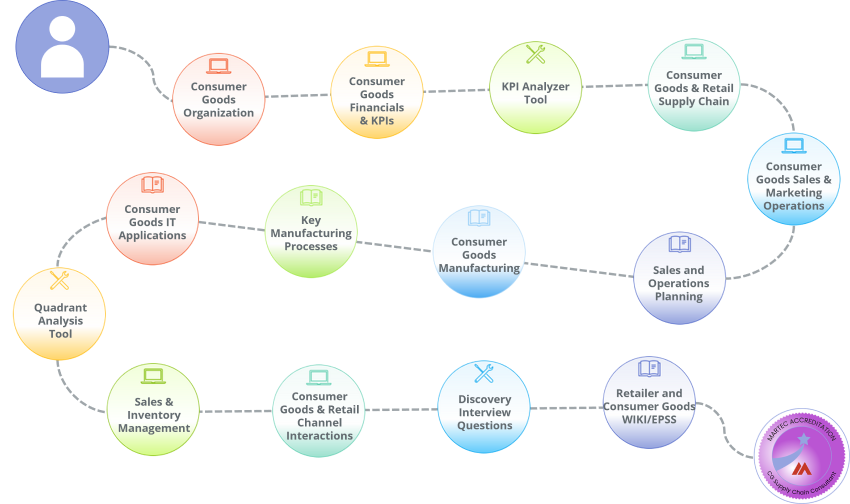Consumer Goods Supply Chain Consultant
Consumer Goods Consultant - Supply Chain Learning Path
This learning path is for consultants, project managers and business analysts who work on implementation projects for clients and need a deeper knowledge of supply chain management processes in consumer goods manufacturing and retailing. It assumes that learners have completed the consumer goods or the retail induction learning path or have equivalent knowledge from past projects.
Select any of the circles along the path to find out more about each step.

The Skills You Learn
By studying this learning path, consultants will gain these skills:
- Recognize the scope of and identify the needs of the various job roles in the consumer goods (CG) supply chain organization.
- Analyze financial statements and identify ways to grow sales, improve achieved gross margins, reduce supply chain expenses, improve inventory management and exploit added value services for retail customers.
- Analyze supply chain KPIs to identify where performance can be improved against competitors, peer groups and historical trends.
- Identify and cater for the needs of different channels.
- Contribute to key processes within the master Sales and Operations planning process.
- Review manufacturing processes to optimize inventory holdings of raw materials, work in progress stocks and finished goods stocks in support of sales and operations plans.
- Use quadrant analysis tools to identify the key IT systems in retailers and CG companies needed to support identified performance improvements.
- Quantify potential improvements and their associated implementation costs to produce a robust return on investment.
